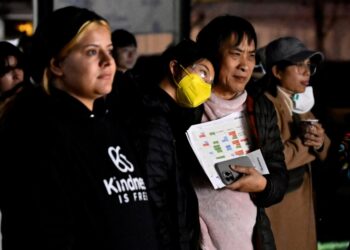The Pasadena City Council adopted Pasadena Water and Power’s 2023 Integrated Resource Plan, governing how the city will meet its energy needs, but will require an updated plan within six months following protest from activists who say the plan doesn’t go far enough in meeting renewable energy goals.
The City Council’s approval at its packed Monday, Dec. 11 meeting followed months of city commission and committee meetings in which residents pushed for the plan to go further and outline more specifically how the city’s utility will meet federal, state, and Pasadena’s own climate change goals.
Pasadena Water and Power undergoes a resource planning process every five years that guides how its power is sourced for the next two decades, resulting in an IRP that must be submitted to the California Energy Commission.
In January, the Pasadena City Council passed resolutions declaring a climate emergency and setting a policy goal of sourcing 100% of its electricity from carbon-free sources by the end of 2030, setting the parameters for PWP’s plan that was being developed above those of state and federal regulations.
“Fundamentally, the IRP is a compliance document that really shows the state that we are in compliance with the state laws,” Councilmember Felicia Williams said. “We did something unique here and we included our aspirational goals. Most other utilities don’t do that but that’s how Pasadena rolls.”
PWP examined several plans outlining different scenarios to meet their goals, with the council approving Scenario 2, or the Waypoint Framework plan.
While the plan approved by the council meets all the required climate change goals, it relies on assumptions of significant resource acquisition, capital upgrades, infrastructure improvements and technology advancements that may not pan out. Because of this, it includes “waypoints” in 2026 and 2028 where PWP and policy makers can review their assumptions and make adjustments, along with…
Read the full article here







